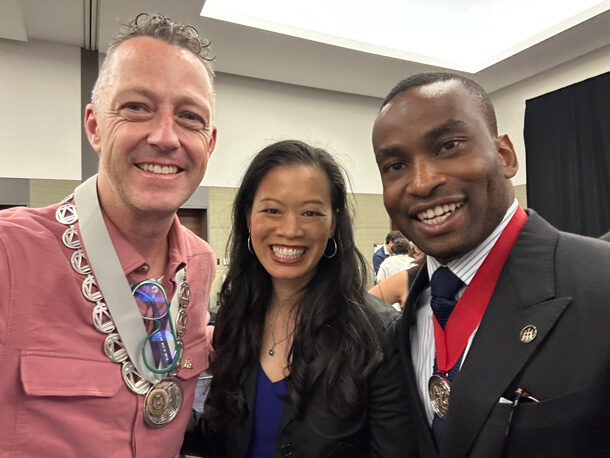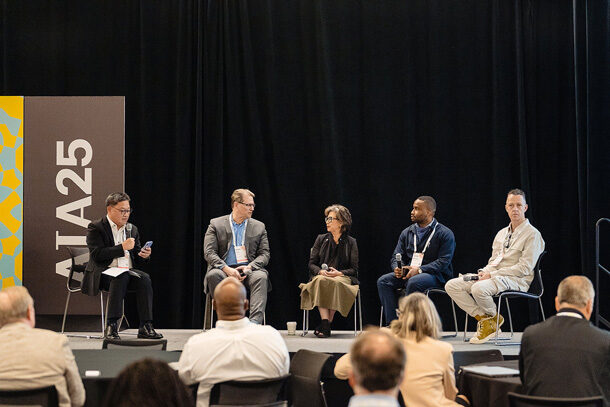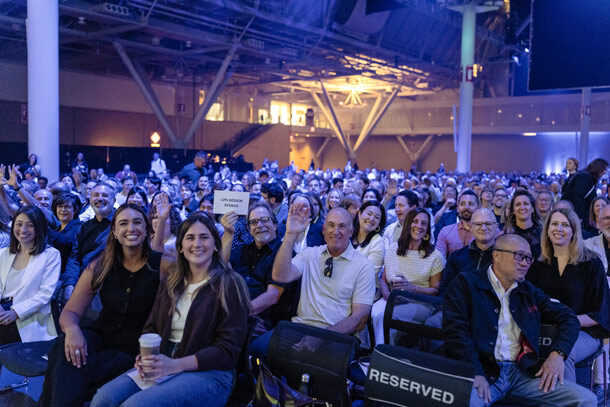
Dear Members,
I recently had the privilege of representing the Australian Institute of Architects at the 2025 American Institute of Architects (AIA) Conference in Boston. With more than 12,000 attendees, the scale and ambition of the event were both inspiring and thought-provoking. I want to share some reflections that I believe are relevant as we consider the future of architecture in Australia.
AI and the Changing Practice of Architecture
One of the most urgent conversations centred on artificial intelligence and its growing influence on our profession. Many believe AI represents the most significant democratisation of architectural services in recent history, with the potential to fundamentally change how architecture is practised. The profession is already shifting towards a broader, more flexible practice model, which will have implications for education, regulation and registration. To remain relevant and support excellence, we may need to explore new pathways and expanded membership models, potentially supported by professional colleges within
the Institute. As a first step, I have requested observer status in the AIA/RIBA working group that is developing ethical policy guidelines for AI in architecture.
Housing Innovation and Policy Leverage
Housing shortages were a key issue across many countries. Delegates from Latin America shared how they are linking sustainability outcomes to planning incentives. This approach could hold promise for Australia. For example, achieving a 6-star Green Star rating for Class 2 buildings could be incentivised with additional development yield. Aligning environmental goals with housing delivery could unlock better outcomes for both communities and the planet.

Political Advocacy in Uncertain Times
While the US political environment is particularly complex, it was clear that advocacy remains powerful when it is clear, consistent and collective. Discussions raised the potential for stronger collaboration between the Five Eyes nations—Australia, the US, the UK, Canada and New Zealand—in shaping global conversations around the built environment.
Institutional Engagement and Collaboration
Meetings with RIBA, the Canadian Institute of Architects and the AIA highlighted shared challenges and opportunities. We discussed reciprocal membership possibilities, greater financial transparency and joint initiatives like global Gold Medal tours and a future Government Architects network. These discussions reinforced the benefits of deeper global alignment, particularly in areas like diversity, equity and leadership.
Membership and Recognition
The AIA’s use of fellowships, post-nominals and national programs such as Day on the Hill and the Conference of Mayors were standout examples of meaningful member engagement. These programs build pride, create visibility and help influence decision makers on the value of design. There is much we can adapt to better connect and recognise our members locally.
Next Steps
I look forward to discussing these insights with National Council and the Board. In particular, I will be advocating for:
- Observer status in the AIA AI Ethics Taskforce
- Broader and more inclusive membership pathways
- Advocacy strategies that connect members to policy conversations
- Stronger international collaboration and reciprocity

Thank you for the opportunity to represent the Institute at this significant event. If any of these ideas resonate with you, or spark new thinking, I would love to hear your thoughts.
Warm regards,
Adam Haddow
National President
Australian Institute of Architects
